The last Soviet heavy tank destroyers
Weight limit
As with heavy tanks, it was assumed that promising Soviet heavy self-propelled guns would be very well-protected vehicles with long 152 mm guns. The first requirements for such installations date back to 1945, although the real work began a year later. They were designed on the basis of the tanks Object 260 (IS-7) and Object 701 (IS-4).
For self-propelled installation on the basis of the EC-4, which had the designation Object 715, it was supposed to use 152-mm gun M31 developed by plant No.172, the same for ballistics with the 152-mm gun of high power BR-2. The same tool was planned to be used for the project of self-propelled installation of the Kirov factory in Leningrad. How exactly it was called is not completely clear. Some sources indicate the index Object 261, others call it Object 263.
Later, the plant design bureau No. 172 developed an even more powerful weapon, which received the designation МХNUMX. In general, it repeated the design of the M48 and had a similar muzzle brake, but the initial velocity of its projectile was reduced to 31 m / s. For such a powerful weapon, the destruction of any enemy tank or bunker was not a big problem. The same gun was supposed to be placed in a half-open self-propelled installation Object 1000.
The main obstacle in the way of all these plans was the delay in work on the EC-7 and problems with the development of mass production of the EC-4. The last activity on both self-propelled units is dated 1947 year, after which the work froze "until better times." Which did not come.
Installing 152-mm gun M48 in one of the heavy self-propelled guns. Which project of ACS is depicted here is currently unknown.
18 February 1949 of the year issued a decree of the Council of Ministers of the USSR No. 701 – 270cc, according to which the development and production of heavy tanks weighing more than 50 tons ceased. It is natural that, following the EC-4 and the EC-7, they ordered to live long and develop self-propelled units based on them.
According to the same resolution, SKB-2 Chelyabinsk Plant and a branch of the experimental plant No. XXUMX (Chelyabinsk) were given the task of developing a heavy tank with a battle weight of no more than 100 tons. Works that received the drawing cipher 50, led to the creation of a heavy tank EC-730. The draft design of the new heavy tank was presented in April 5 of the year, and already on September 1949 at ChKZ they finished the assembly of the first prototype.
It was quite logical to develop a self-propelled unit on the same base, but the designers were not in a hurry with this. Still alive was the memory of how the work on self-propelled guns based on EC-7 and EC-4 ended. They only gave it back at the moment when it became clear that the 730-th object turned out to be quite successful, and its adoption into service was not far off.
The SAU 116 Object (SU-152P) is being tested. The 152-mm M53 gun mounted on it was used by the special design and technological documentation center of the Kirov factory as a base for the gun of the new ACS
In the literature devoted to the T-10 and machines based on it, the beginning of an assault self-propelled installation usually dated July 2 of the year 1952. In fact, the chronology of events is somewhat different. The fact is that self-propelled installation is usually done under a well-defined artillery system. And the gun that eventually “registered” on a machine known as the 268 Object was not even in the project 1,5 of the year after the start of work. But work on this tool began much earlier.
From this point of view story The new heavy SAU began as early as 1946, when, in parallel with the M31 and M48, the design bureau of Plant No.172 began the development of the 152-mm M53 gun. This gun with the initial velocity of the 760 projectile, m / s, was developed for self-propelled installation. The 116 Object, known as SU-152П. And the gun, and the installation itself was built in 1948 year. Tests showed insufficient accuracy of the system, and the project was closed. Now SU-152P can be seen in the exposition of the park "Patriot". So, it was this artillery system in a slightly modified form that was intended as a weapon for a promising self-propelled gun.
Draft design of a modified 152-mm M53, 1952 gun for installation in heavy ACS
The work on the new car, which initially did not have any designations, was initially headed by P. P. Isakov. The development of the plant was carried out by the team of the Special Design and Technology Bureau (OKTB) of the Leningrad Kirovsky Plant. The car was designed in three versions at once, two of which were markedly different from the 268 Object, which is now quite widely known. The fact that the design began before July 1952 of the year is eloquently indicated by the dates in the draft designs of the 2 and 3 versions - 25 of April 1952. By that time, the basic parameters of the machine were known. One of the main requirements for the ACS was the weight limit: its combat weight should not exceed 50 tons.
ACS based on the 730 Object, option # 2. By the way, the first heavy self-propelled propulsion unit of the fighting compartment was worked out by N.F. Shashmurin as early as 1944
Option №2 projected heavy SAU provided aft accommodation combat compartment. Due to this, the length of the case was reduced to 6675 mm. The entire nose of the car occupied the engine compartment, so that the driver-mechanic there was no place. He was put in the fighting compartment, where he was located on the right in the direction of travel. With this arrangement, the review of the driver turned out to be unimportant.
Such inconveniences were compensated by a relatively small tool overhang for the dimensions of the machine - 2300 mm. The thickness of the forehead of the cabin was from 150 to 180 mm, the sides of the 90 mm. The upper front hull sheet had a thickness of only 75 mm, but at the same time its angle of inclination was 75 degrees. In short, the car had quite a decent protection. The crew of the car consisted of four people. To facilitate the work of loading the shells were in a special drum behind the gun.
Project No. 3, which provided for the installation of a gun in a rotating turret, April 1952
The third variant of the self-propelled unit looked no less original. By and large, it was not even a self-propelled unit, but a tank, which, due to a more powerful and heavy weapon, had to reduce the thickness of the armor.
However, the difference between the 730 Object and the projected SU-152 (as this machine is indicated in the documentation) is quite significant. The tower for ACS designers developed from scratch, and for a normal installation of 152-mm guns in it, the diameter of the shoulder strap had to be increased from 2100 to 2300 mm. The maximum thickness of the armor tower reached 200 mm. The turret was located and ammunition, the size of which remained the same - 30 shots. The main ammunition was supposed to be placed in the aft niche, which slightly facilitated the work of the loader.
Because of the new tower, the building had to be changed, the length of which, compared to 730, grew by 150 mm. The thickness of the upper side plates was reduced to 90 mm, and the bottom - to 50 mm, this was done to preserve the combat mass within 50 tons. For the same purpose, the thickness of the top front and stern sheets was reduced to 60 and 40 mm, respectively. A twin machine gun on a self-propelled one was not envisaged, but the anti-aircraft installation of a large-caliber machine gun CPV was to be installed at the top.
Thus, by the summer of 1952, the design of a self-propelled unit based on the “730 Object” did not start, but had already acquired completely shaped outlines. The order of the Council of Ministers of the USSR from July 2. 1952 of the year rather "legitimized" the work on the car, and also introduced a number of amendments to the design works that were already under way. Around the same time, the self-propelled unit received a drawing index 268, and the theme itself became known as the 268 Object.
Soviet "Jagdtigr"
The literature indicates that a total of 268 variants of the machine was developed for the 5 Object. This is both true and not true. The fact is that the two options mentioned above were developed before the final tactical and technical requirements were obtained. And they didn't even wear the 268 cipher.
Therefore, in fact, we are talking about three versions of the machine, two of which were an evolution of the previously developed draft designs. Both of these options in a revised form were ready in December 1952. In this case, the artillery system, which was supposed to be installed in these machines, still continued to be designed.
According to preliminary calculations, the initial velocity of her projectile should have been 740 m / s. The basis was taken self-propelled gun M53, which was reworked using separate nodes 122-mm tank gun M62-T. According to calculations, the total mass of such a system, which had no official designation, was 5100 kg.
Option №4 differed enhanced armor and more spacious fighting compartment, where there were already 5 crew members
The revised draft of the second version of the self-propelled unit, which received the serial number 4, was prepared by the Special Design Bureau of the Kirov Plant for December 18 of 1952. This time, the machine already had the 268 cipher, and J. Kotin appeared as its chief designer. Externally, the 4 version was very similar to the 2, but in fact the differences were significant.
For a start, the length of the body is increased to 6900 mm, that is, almost to the length of the 730 Object. At the same time, the length of the gun barrel for the dimensions of the body decreased by 150 mm. The designers refused from the mowed fodder sheet, which had a positive effect on the internal volume of the fighting compartment. Such changes were extremely necessary, because, according to the new technical requirements, the crew of the car was increased to 5 people.
The second loader, located behind the commander, became a new member of the crew. The commander himself received a new commander's turret with a rangefinder, and in front of him appeared a machine-gun with a "curved" barrel. A little altered and place the driver, who received a new viewing devices. The system with the "drum" remained in place, while the authors of the conceptual design emphasized that due to the large internal volume it is possible to install more powerful weapons. In parallel with the increase in the volume of the fighting compartment, the body armor increased. The thickness of the lower frontal hull sheet was raised to 160 mm. The thickness of the cutting forehead remained 180 mm, but the bevels 160 mm thick were made at a large angle. With all this, the weight of the machine remained within 50 tons.
10 December 1952 of the year was completed a revised version of the 3 version of the ACS, which received the 5-th serial number. The length of its hull was reduced to the level of an 730 object (6925 mm), while the upper side plates were turned, which became bent. The body forehead has also changed a little, but the thickness of these parts has remained unchanged. The preservation of the hull length within the base tank was due to the installation of the B-12 – 6 engine, which, by the way, eventually appeared on the heavy T-10М tank. Later, he also migrated to the enlarged tower epaulet.
The tower designed for 4 people has undergone alterations. The commander here also received a new commander's turret, while the curved machine gun was given to the loader by the OKTB engineers of the Kirov factory. By the way, both redesigned projects inherited the installation of the KPV anti-aircraft machine gun.
Option №5 differed from the previous version №3 alongside rework and crew increase to 5 people
Both of these options, however, did not go further than the outline studies. In January, 1953, the projects were submitted to the Scientific and Technical Committee of the Main Armored Office (GBTU) and the Ministry of Transport and Heavy Machinery (MTiTM). After examining them, the members of the NTK concluded that these projects imply the need for a serious reworking of the 730 Object hull and therefore are not suitable.
The Commission approved for further work a completely different, much more “calm” project, which required minimal rework of the base chassis. Among the major changes in it, it required only the installation of a slightly more compact B-12 – 6 engine, which, by the way, was also provided for in option # XXUMX.
A revised version of the project was introduced in June 1953. Also, a wooden model on the scale of 1: 10 was presented to the commission. And on August 9, 25 on the subject of the 268 object was given a conclusion signed by Colonel-General A. I. Radzievsky.
A number of sources indicate that at this stage the design work has stalled, but it is not. Of course, the work on the self-propelled was somewhat influenced by the adoption of the 28 on November 1953 of the year at the arsenal of the 730 Object, which later became the T-10 tank. Nevertheless, the work on the car continued. N. Chistyakov, who had previously worked in Nizhny Tagil as the head of the new design sector, became the lead engineer of the 268 Object. There, when it began work on a medium tank Object 140, but for several reasons, the designer left Nizhny Tagil and moved to Leningrad. The general management fell on N. V. Kurin, a veteran of the Kirov factory and the author of a number of self-propelled rigs.
Draft design for the final version of Object 268, June 1954 of the year
There was, however, another reason that slowed down the work on the 268 Object, which some researchers do not take into account. The fact is that the instrument, which was supposed to be put on a self-propelled unit, was still at the design stage. Meanwhile, the staff of the plant number XXUMX was not idle. Following the 172-mm M122 cannon, proposed for installation in the promising tanks Object 62 and Object 752, Perm gunsmiths at the beginning of 777, finally reached the caliber 1954 mm.
From the moment of designing М53, the modified version of which was supposed to be put on the 268 Object, 7 years passed, and the development of artillery in these years did not stand still. As a result, the project 152-mm guns, designated M64. The initial velocity of his projectile was almost the same as that of the M53 (750 m / s), but the barrel length noticeably decreased. Considering the fact that the 268 Object combat compartment was located approximately in the same place as the T-10 combat compartment, this was very important. For comparison, the modified M53 had a total horizontal length from the axis of rotation of the turret to the tip of the muzzle brake 5845 mm, and the M64 - 4203 mm. With a new weapon, the trunk reach was just 2185 mm.
This machine is made in metal. Spring-Summer 1957 of the year
Officially, the technical design of the M64 was reviewed by the Main Artillery Directorate (GAU) in August 1954. In fact, the information on the new instrument was received earlier by the collective of the special design and technological bureau of the Kirov factory. The already mentioned thesis that the design work on the 268 Object by the fall of 1953 has stalled sounds a bit strange against the background that the drawing documentation for the car is dated 20 of June 1954.
The drawings (the entire project documentation contained 37 sheets) depicts a machine that most closely resembles that 268 Object, which was later built in metal. Conceptually, the car was a great reminder of the German self-propelled unit Jagdtiger, the most unified with a heavy tank Pz.Kpfw. Tiger Ausf.B.
The principal difference between the two machines was that the Soviet engineers managed not only to fit into the dimensions of the T-10 case, but also to preserve the same combat weight. And the height of the Object 268 was even slightly lower than the T-10. From the previous projects, the car inherited a commander's turret with a rangefinder. As in the case of the predecessors, the thickness of the hull from the sides and the stern had to be reduced, but the thickness of the sides of the cabin increased to 100 mm. It turned out to be quite impressive and the protection of cuttings from the forehead - 187 mm. Due to the fact that the cabin was expanded to the total width of the hull, it was quite spacious.
Between the past and the future
The final estimate for the 268 Facility was completed in March 1955. At the same time were approved and the time of manufacture of prototypes. According to the plans, the first sample of the 268 Object was expected to be received in the first quarter of 1956, two more copies were to be manufactured in the fourth quarter. Alas, it was during this period that work began on heavy tanks of a new generation, Chistyakov led the work on a heavy tank, the 278 Object, and this directly affected the readiness of the SAU.
As for the plant №172, he finished the creation of a prototype 152-mm guns M64 in December 1955 of the year. And in February, 1956, after a factory test program, the gun with the 4 serial number went to Leningrad, to the Kirov factory.
The front of the car looked very impressive. Surprisingly, in height it was lower than ISU-152
Tightening the work led to the fact that the first prototype of the 268 Object was completed only by the autumn of the 1956 year. In general, the machine complied with the project documentation, although some changes did occur. For example, it was decided to abandon the convex roof of the cabin. Instead, self-propelled installation got the roof more simple to manufacture the design. The machine gun with a “crooked” barrel did not turn out; in its place, the experienced car had a plug. The shape of the forage leaf, which it was decided not to bend, became simpler. This part was made removable, because through it was mounted and dismantled guns.
The crew of the car remained the same and counted 5 people. Due to the successful layout inside the car it was not at all crowded, even a very tall person could work in it. And this despite the fact that the ammunition of a large-caliber gun made 35 shots. The convenience of the crew was due to including the design features of the gun. Firstly, the M64 had an ejector, thanks to which it was possible to minimize the ingress of powder gases into the fighting compartment. Secondly, the gun received a loading mechanism, which markedly facilitated the work of the loaders.
268 object, starboard view
Factory tests of the prototype 268 Object began in the fall of the year 1956, and ended in the spring of the year 1957. In general, the car showed characteristics close to the calculated ones. On road performance 268 Object almost coincided with the T-10, including the maximum speed.
Soon after the tests, the self-propelled unit went to the NIIBT Polygon in Kubinka. Tests by shooting showed that the plant №172 not in vain delayed the development of weapons. М64 in accuracy of fire clearly exceeded the ML-20С, which was installed on the ISU-152. The new weapon turned out to be the best both in terms of the initial velocity of the projectile, in the firing range, and in the rate of fire.
Alas, all this did not play any role. It was decided to abandon the construction of two more prototypes of the 268 Object, and the first prototype of the machine went to the museum at the NIIBT Polygon. Now this copy is in the exposition of the park "Patriot". Recently, the museum staff managed to bring the ACS in the running state.
From this perspective, it is clearly seen that the roof of the cabin is different from the project.
Appear Object 268 five years earlier, the chances of going into a series he would have been very high. The car turned out successful, quite convenient for the crew and well-protected. But by 1957, a whole series of events had taken place, which together made launching into a series of such SAUs senseless.
To begin with, the development of heavy tanks of the new generation (Objects 1955, 277, 278 and 279), which had a significantly higher level of armor protection, began with 770. Against them, even the M64 gun was no longer enough. In the GBTU, they were well aware that the designers of armored vehicles abroad also do not sit still. It turned out that the promising self-propelled gun was armed with an artillery system that was already outdated.
In addition, just in the middle of the 50-s, a program for the modernization of MIS-152 began, which significantly extended the life of these machines. Unlike the 268 Object, which was only to be launched into production, these self-propelled guns were already here and now. Yes, the ML-20 in all parameters was inferior to the M64, but not so significant.
Finally, the production of T-10 was extremely slow. Downloading the Kirovsky Zavod and ChTZ with self-propelled units also meant an additional narrowing of the already not wide trickle of T-10 that entered the troops. In addition, the plant number 172 for the production of new ACS required to develop a new gun.
There was one more reason, which largely coincides with why the British, at about the same time, put an end to their heavy self-propelled installations FV215 and FV4005. The fact is that in 1956, work began on projects of anti-tank guided missile systems. 8 May 1957, the USSR Council of Ministers authorized the development of tanks and self-propelled guns armed with guided missiles.
Many will immediately recall the “bad Khrushchev”, but let's face it. The launcher for an anti-tank missile is much more compact than a gun. Rocket launch is much easier, and most importantly, it can be controlled in flight. As a result, with a similar power charge, the rocket is an order of magnitude more efficient. Unsurprisingly, the 268 Object was the last Soviet heavy assault ACS with cannon armament.
Sketch design of a tank fighter jet Object 282T, 1958 year
This work on the self-propelled units based on the T-10 work has not stopped. In the same 1957, the OKTB of the Kirov Plant began the development of a machine that received the designation Object 282. It is often called a tank, but in fact it was a heavy tank destroyer. It was created with the expectation of 170-mm Salamander anti-tank missiles, but due to the fact that the NII-48 team could not bring them to mind, they changed the weapons. In the final configuration, the machine, which received the 282T Object Index, was to be equipped with either 152-mm anti-tank missiles TRS-152 (22 missiles) or 132-mm TRS-132 missiles (30 missiles).
Object 282T on trial, 1959 year
Released for testing in 1959, the car was strikingly different from previous self-propelled units. Despite such an impressive ammunition and crew in the 2 – 3 man, the tank was slightly shorter than the T-10. And most importantly, its height was only 2100 mm. The front part of the tank was redone. In addition, the designers moved forward and fuel tanks, separating the crew from them 30-mm partition. The car received a forced B-12 – 7 engine with an 1000 horsepower. Its maximum speed increased to 55 km / h.
In a word, it turned out to be an extraordinary machine that was eventually destroyed by the weapons. Tests have shown that the Topol control system installed at the 282T Facility does not work reliably, which led to the collapse of the project.
This should have been a redesigned project bearing the designation Object 282K. Before making it in the metal it did not come
In the same year, 1959, the Kirovsky OKTB, developed a project for an improved machine, which was designated the Object 282K. Its combat weight increased to 46,5 tons, and the total height decreased to 1900 mm. As planned, the car was equipped with two launchers TRS-132 (20 missiles for each), located in the sides. On the stern was a 152-mm PURS-2 launcher with 9 missiles. The fire control system was fully borrowed from the 282T Object. Due to the failure of the 282T Object to be tested, work on the 282 Object has not gone beyond the design phase.
The history of the design of self-propelled units based on the T-10 is over.

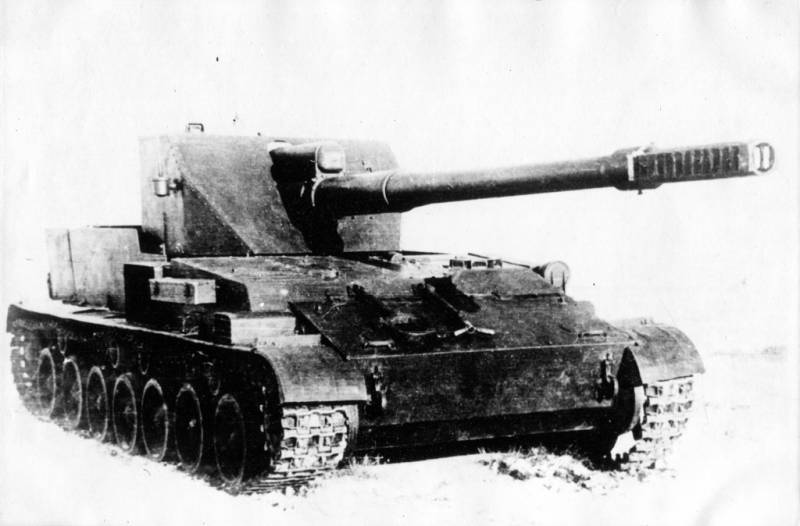
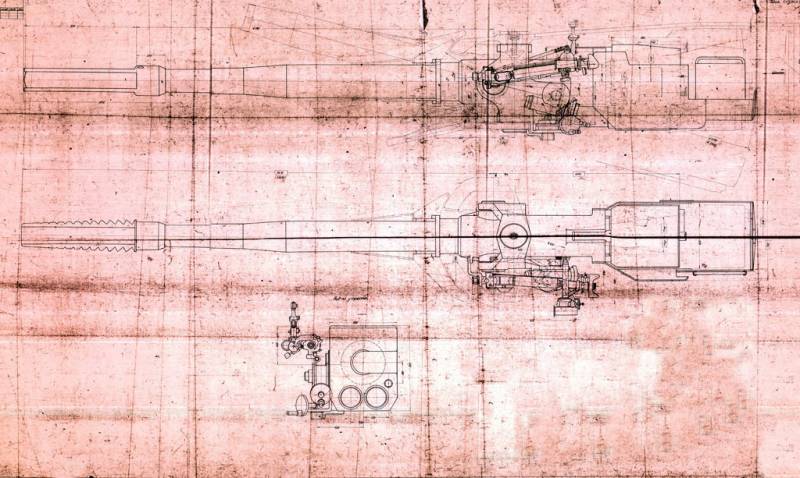
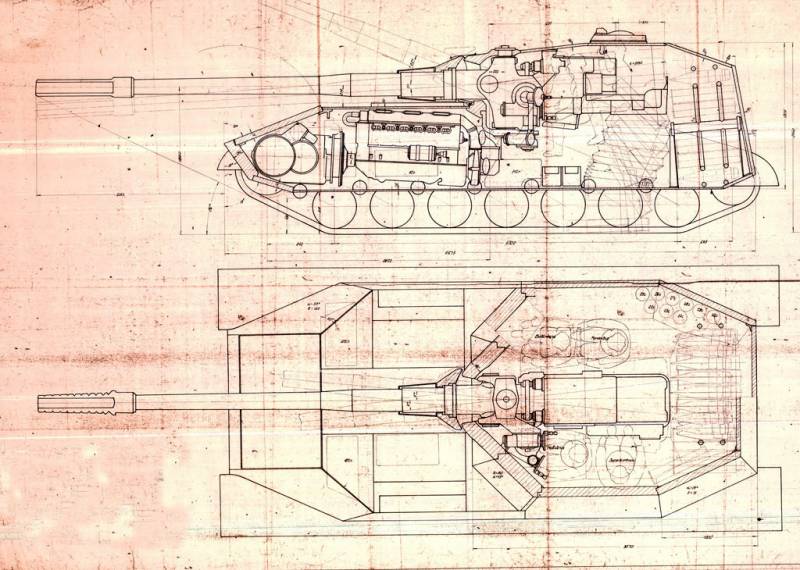
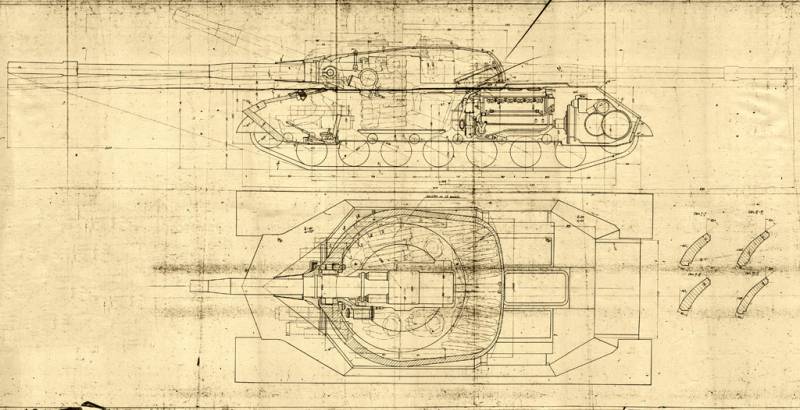
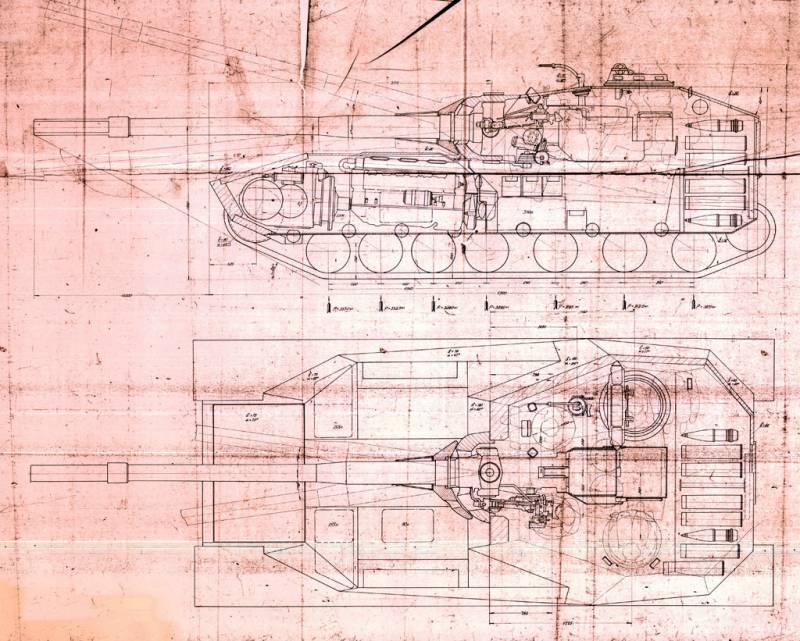
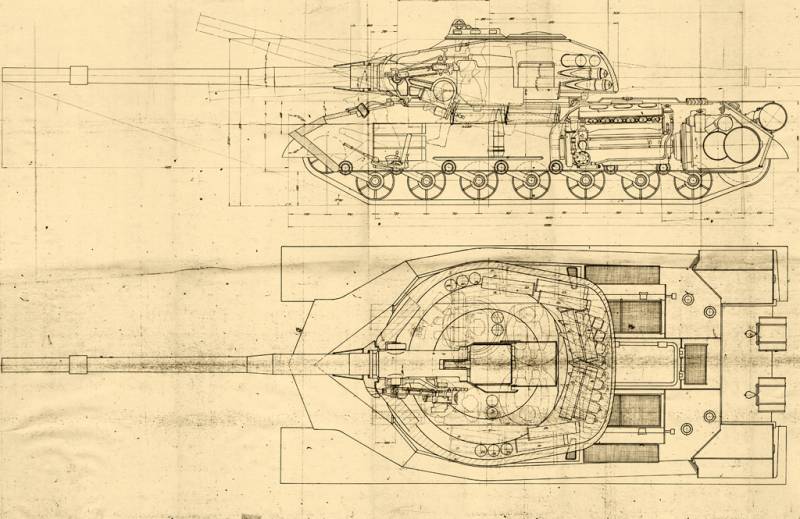
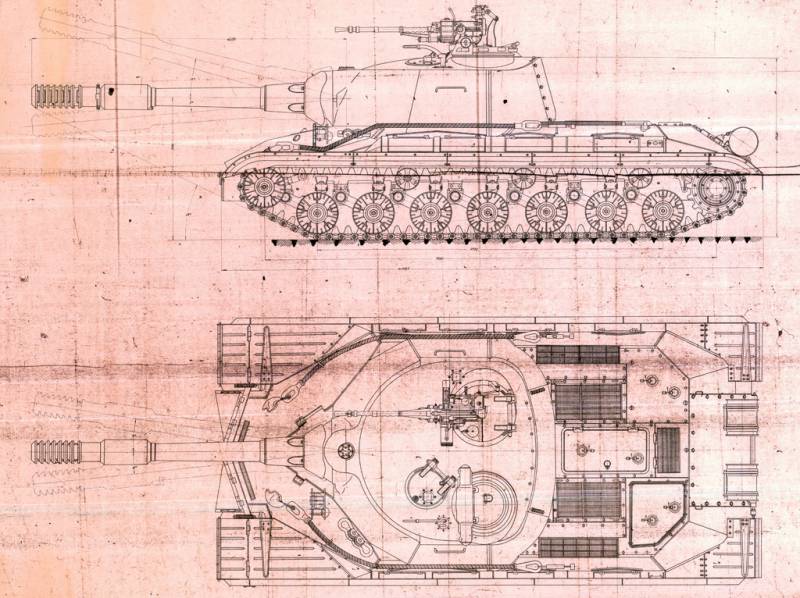
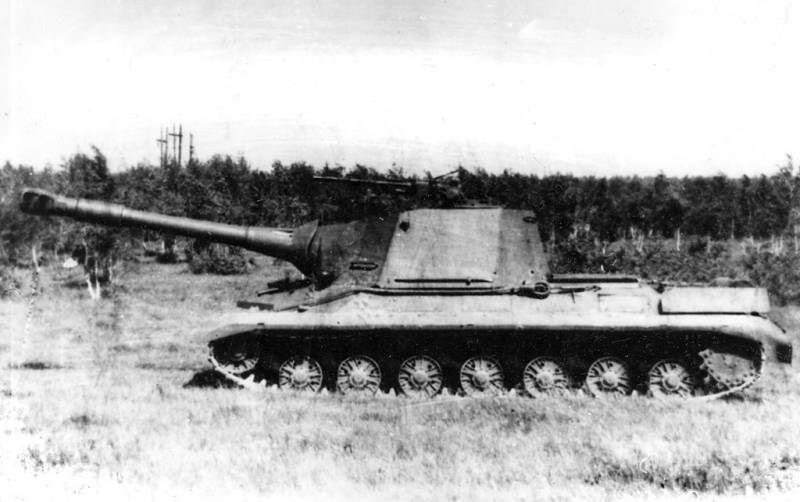
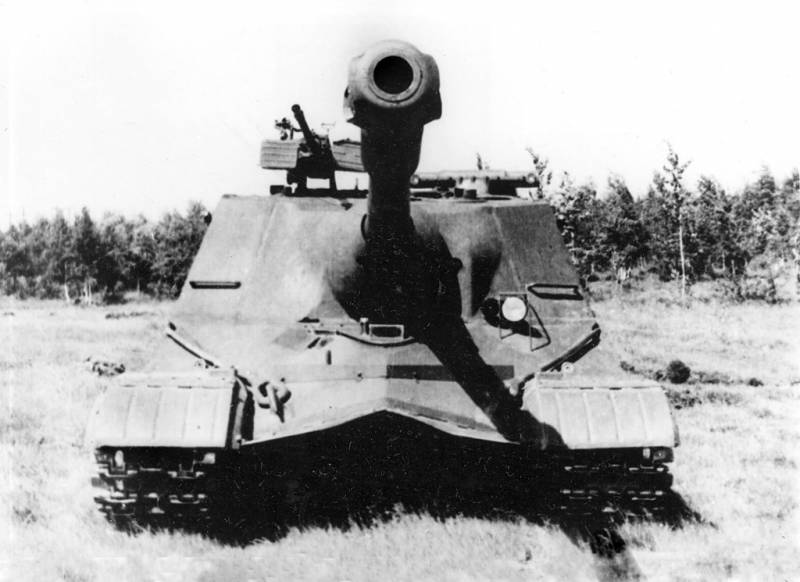
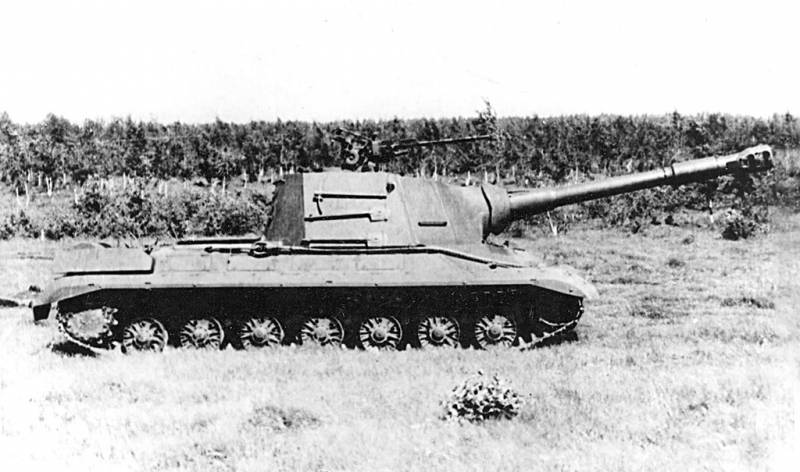
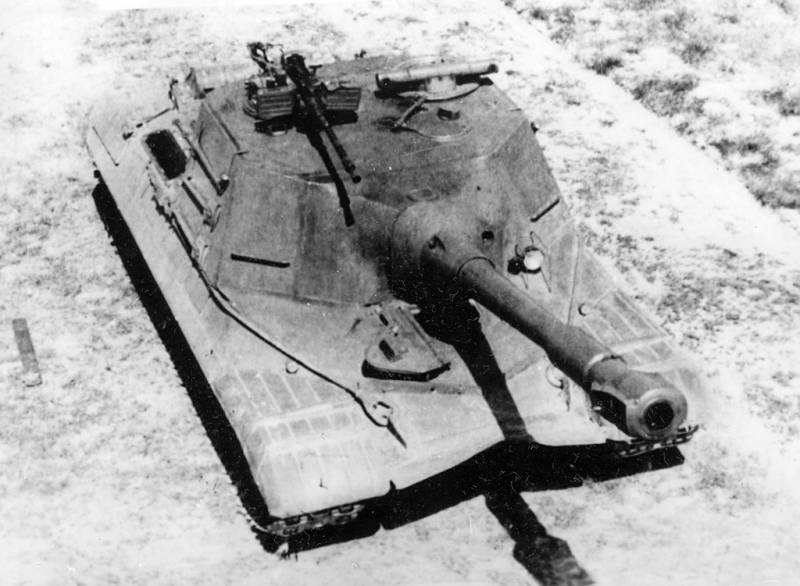
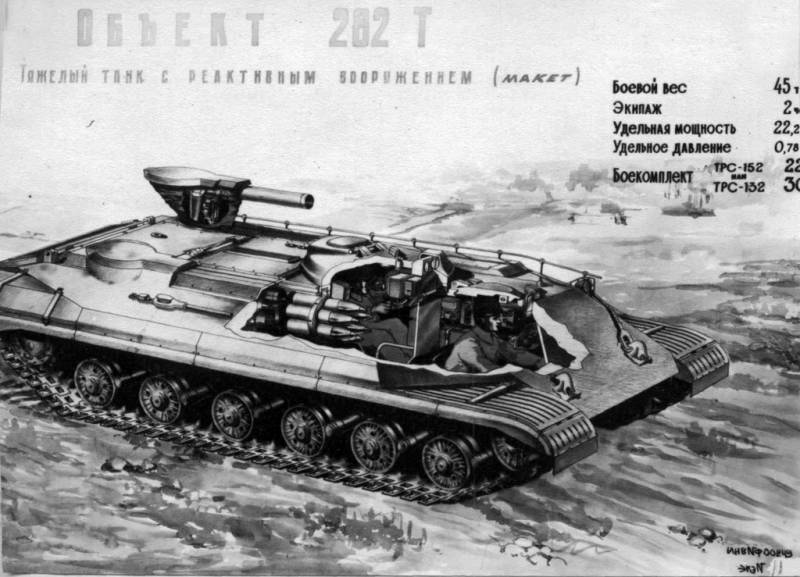
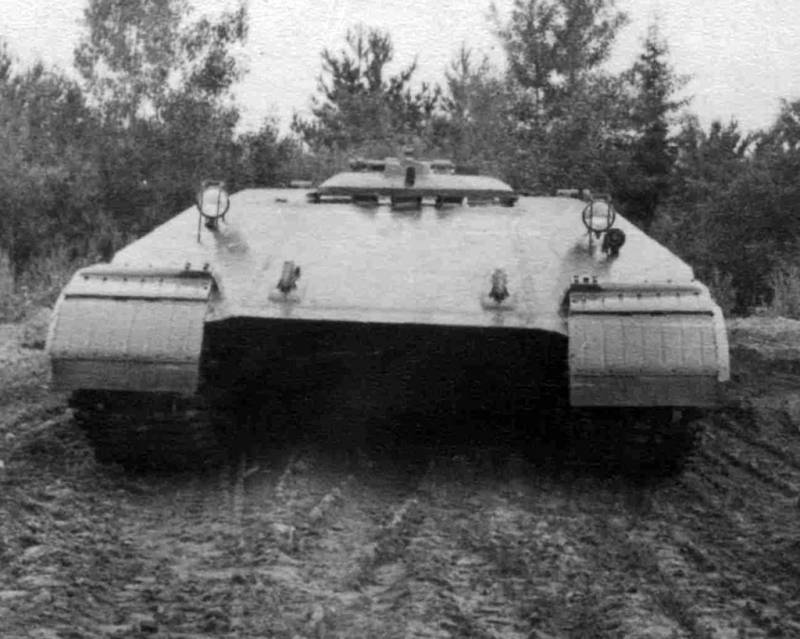
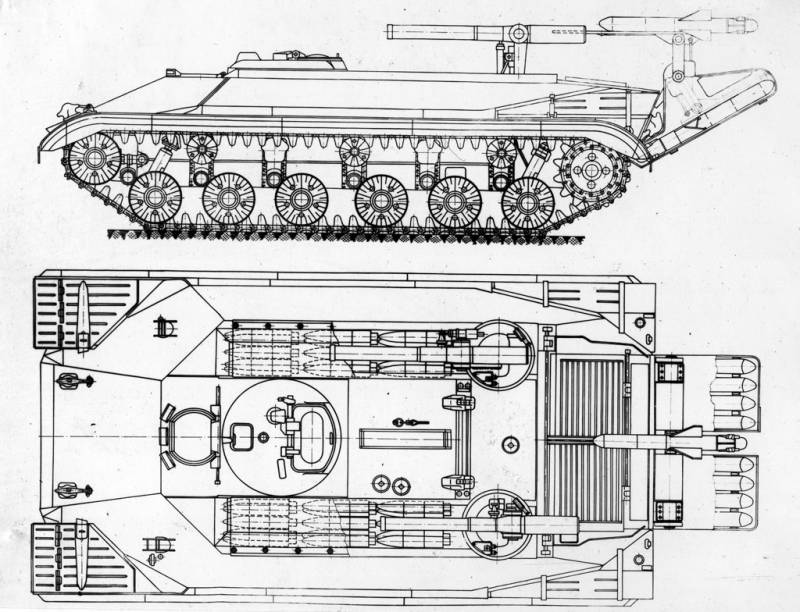
Information